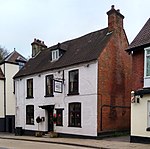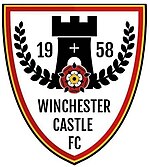Winnall, Hampshire

Winnall is a northern suburb of Winchester, Hampshire, England, on the east bank of the River Itchen. It is the location of the Winnall Moors nature reserve on the flood-plain of the Itchen and the University of Southampton's Erasmus Park hall of residence. Winnall is also the location of St Swithun's School, Winnal Primary school and Winchester's main industrial estate, occupying land between the A34 and the former Didcot, Newbury and Southampton Railway, by junction 9 of the M3. The name is presumed to derive from Wilighealh, a Saxon name probably relating to willows, mentioned in the Domesday Book as part of nearby Chilcomb. It appears in its modern spelling on a 1575 map by Saxton. Winnall was an ancient parish (incorporating that of St Giles by the late 13th century), but was later absorbed by Winchester, and is not a modern civil parish.
Excerpt from the Wikipedia article Winnall, Hampshire (License: CC BY-SA 3.0, Authors, Images).Winnall, Hampshire
Winnall Manor Road, Winchester Winnall
Geographical coordinates (GPS) Address Nearby Places Show on map
Geographical coordinates (GPS)
| Latitude | Longitude |
|---|---|
| N 51.065335 ° | E -1.29707 ° |
Address
Winnall Manor Road
Winnall Manor Road
SO23 0NN Winchester, Winnall
England, United Kingdom
Open on Google Maps











